AOI 50th Anniversary – I was there!
The AOI’s history is a long and rich one, with countless volunteers supporting what was initially very limited staff numbers.
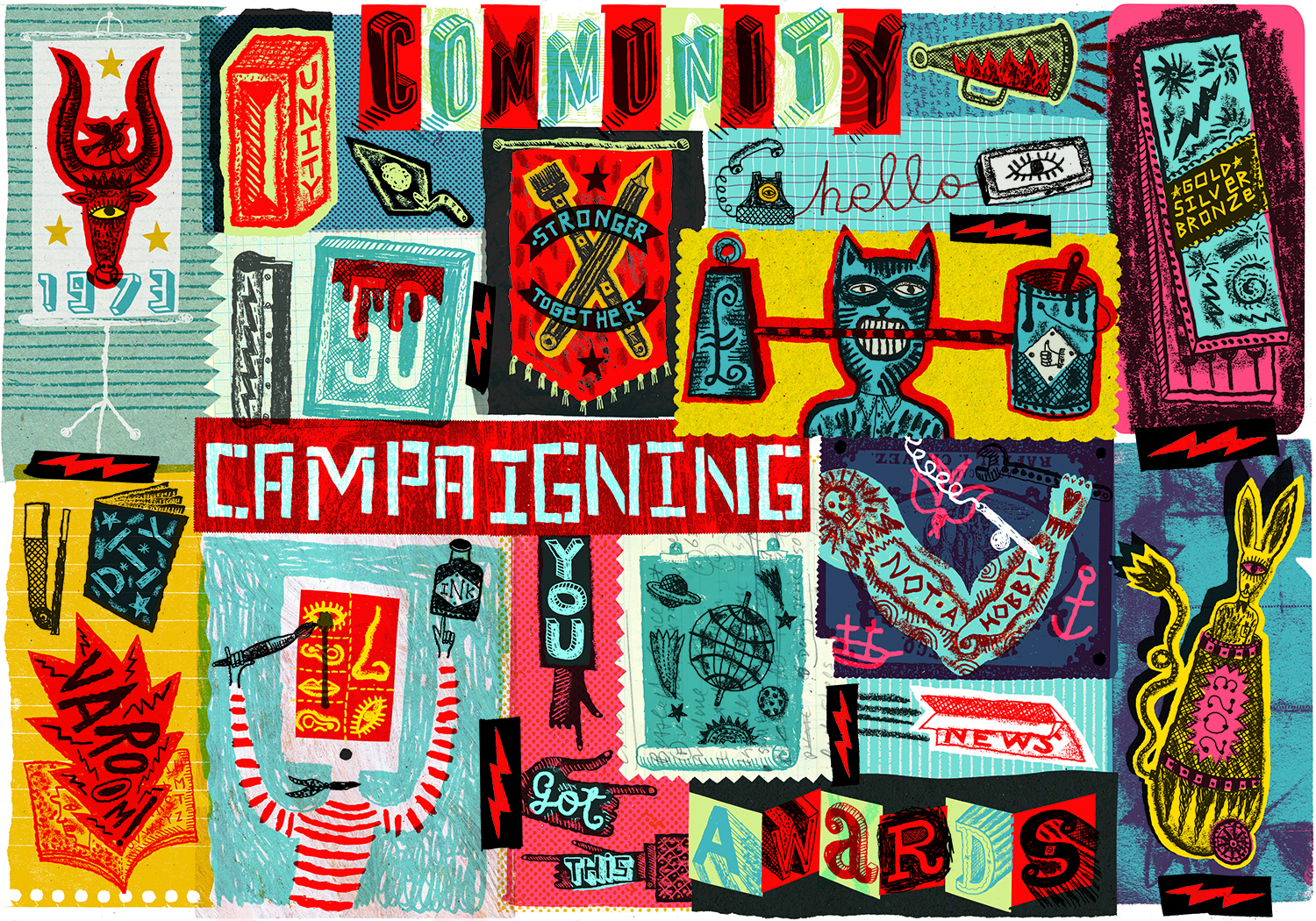
We asked a few of those who really helped the AOI along the way for their thoughts on the organisation and their input.
Peter Brookes
Illustrator Peter Brookes was early AOI committee member. He has been a political cartoonist for The Times since 1992, and has won the British Press Awards cartoonist of the year eight times.
I seem to remember being involved, if not from the very beginning, then at least from when we became a legal entity. Some things are rather hazy now, from a distance of fifty years, but what is not at all hazy is the justifiable sense of anger which essentially was our motivation.
The vexed question of ownership of artwork was a major factor behind it all….after all, the sale of your original illustrations should be potentially a considerable boost to your income. In an unregulated, mainly freelance profession this mattered, where fees paid would often be derisory, and too many clients considered ownership theirs as of right.
My own involvement centred on editing the AOI Newsletter for a good number of issues. I remember a strong committee, many of whom were professional illustrators. Terrence Dalley, Rufus Segar, Angela Landels, Jannat and Norman Messenger, among others, would meet in Jannat and Norman’s flat in Chiltern Street, off Baker Street. We would debate ways of highlighting the problems we faced, as well as commissioning interviews with the famous (eg Ardizzone) or the unsung (eg the master of scraper-board, Bill Butt). I can remember we produced a striking label, to be affixed to the back of all artwork, loudly proclaiming ownership of said work. It looked suitably official and intimidating, though tastefully (of course), designed by Norman, as was the Newsletter. Lord above, we even had a gossip column, and you know your Association has arrived when you’ve got something to gossip about.
I apologise for any names left out, or facts misremembered. It was a long, long time ago, but what I do remember correctly was how exciting it was to be involved in something so purposeful, and with such delightful people.
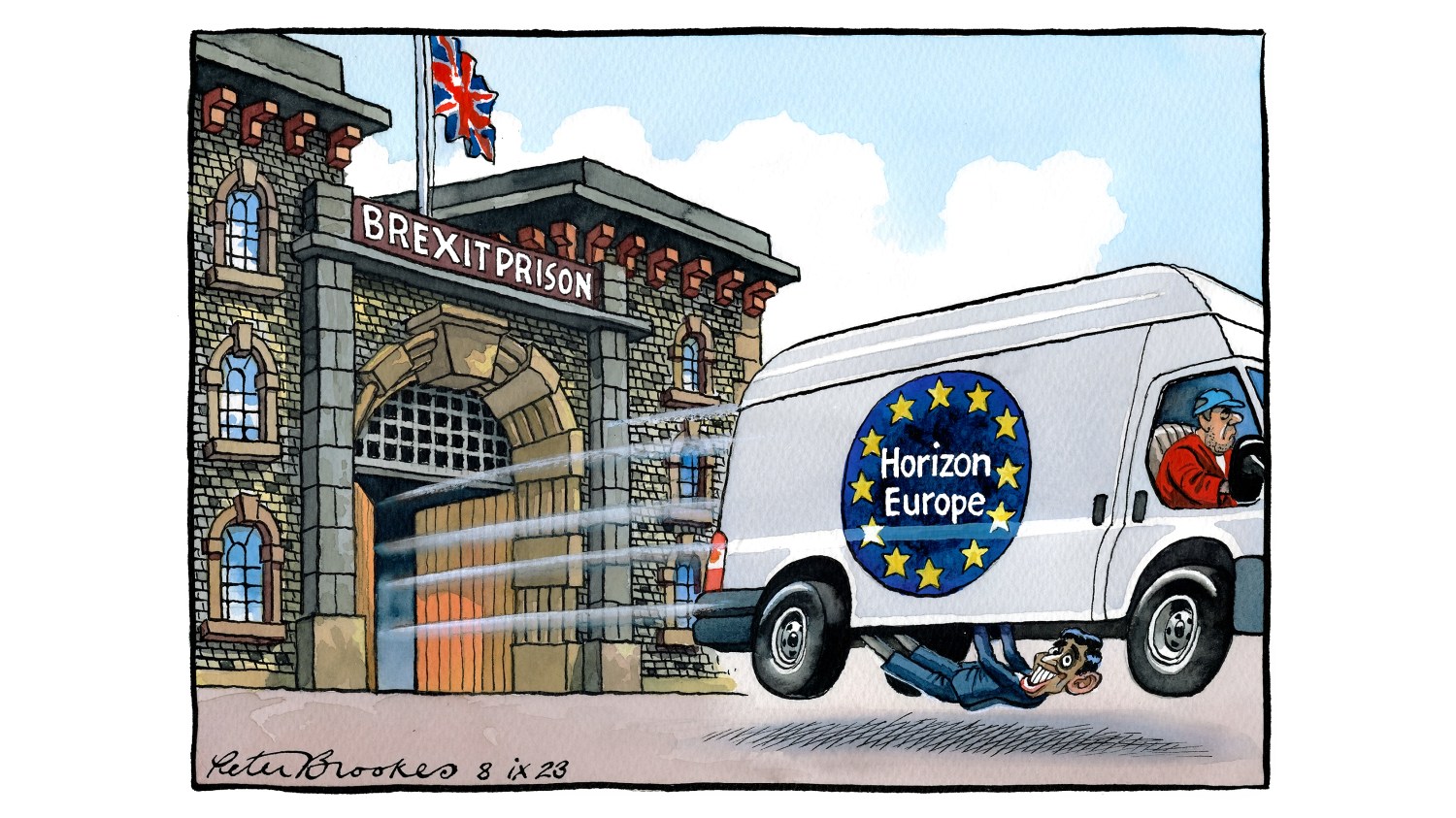
Chloë Cheese
AOI Patron and artist, Chloë Cheese, joined the AOI not long after the organisation began.
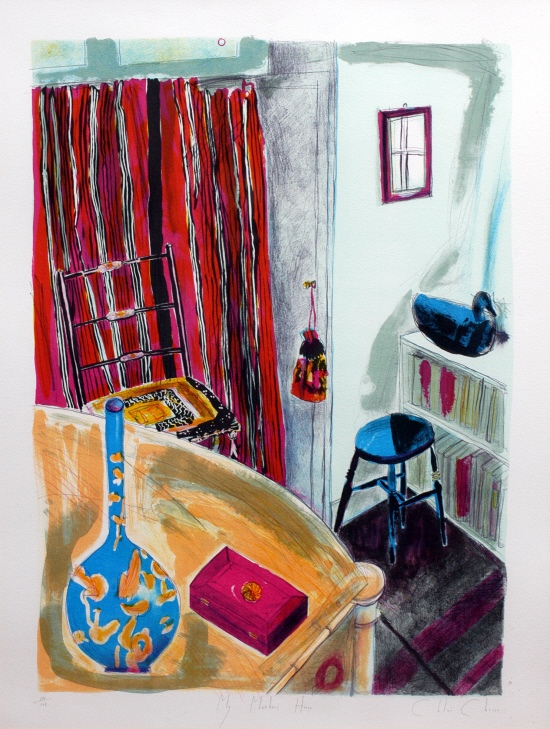
Before the AOI all those difficult questions about rights and fees could only be answered by anyone we knew with practical experience. I used to ring Dan Fern who had been one of my tutors, but to have a team of people who were interested and enquiring, who could then build on that gathered information (before it was possible to Google anything), was very reassuring.
I remember Dan Fern designing an early AOI magazine cover [in 1977, below], and because it was in colour a group of us had to help cow gum it to the front of the magazine at his house.
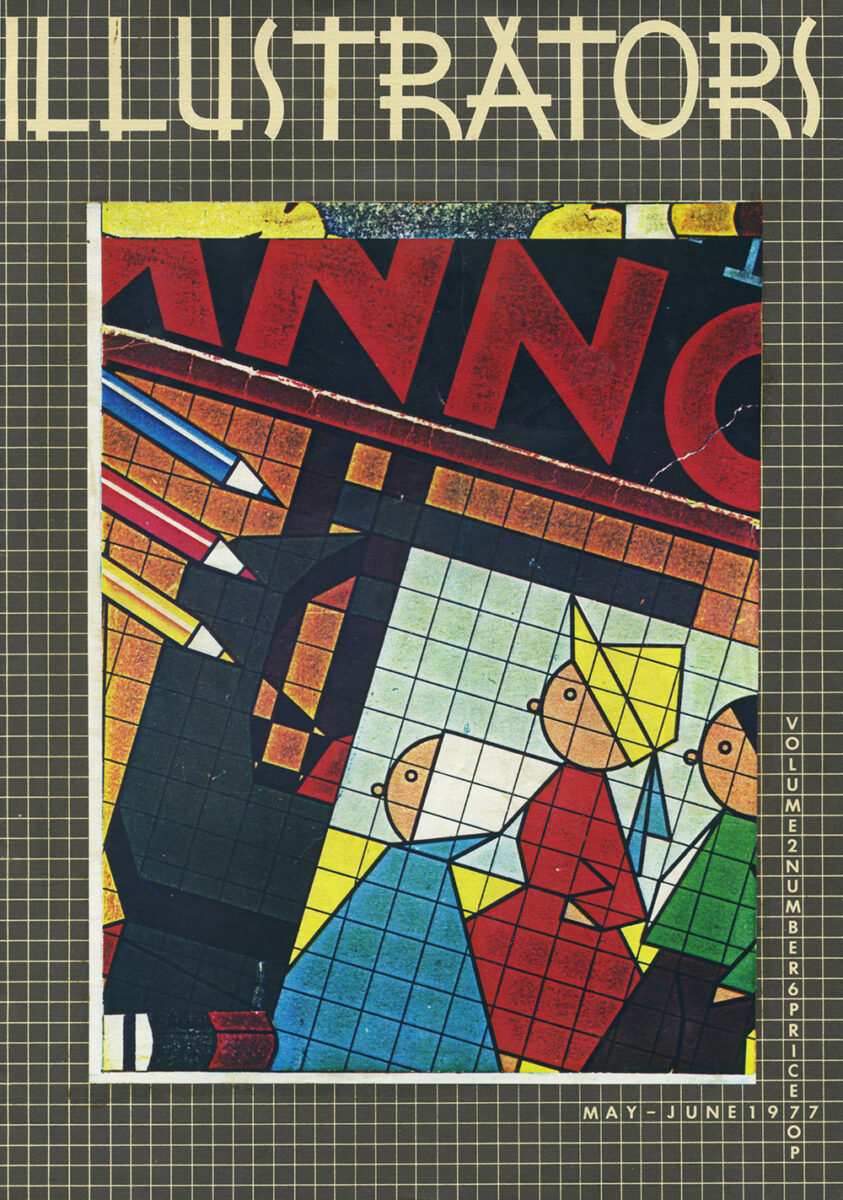
Carolyn Gowdy
Artist and Illustrator, Carolyn Gowdy, became an AOI Patron in 1994.
Congratulations to the AOI on its 50th anniversary this year! You have done so much to educate, to provide professional guidance, to protect illustrators’ rights, and to inspire creativity.
I have always viewed illustration as an art form. I consider myself both an artist and an illustrator. From the beginning when, as a young person, I made a serious commitment to my art, I chose to place the importance of content, freedom of expression, and personal vision as a cornerstone in my work.
From the pages of children’s classics to the vast narrative traditions in art history, the medium of illustration continues to inspire. I also observe the dynamic way it continues to adapt, as an art form, to an ever-changing world. The quality of communication determines the quality of our lives. Illustration, as a form of visual communication and storytelling, holds an important place in the heart of humanity that is beyond time.
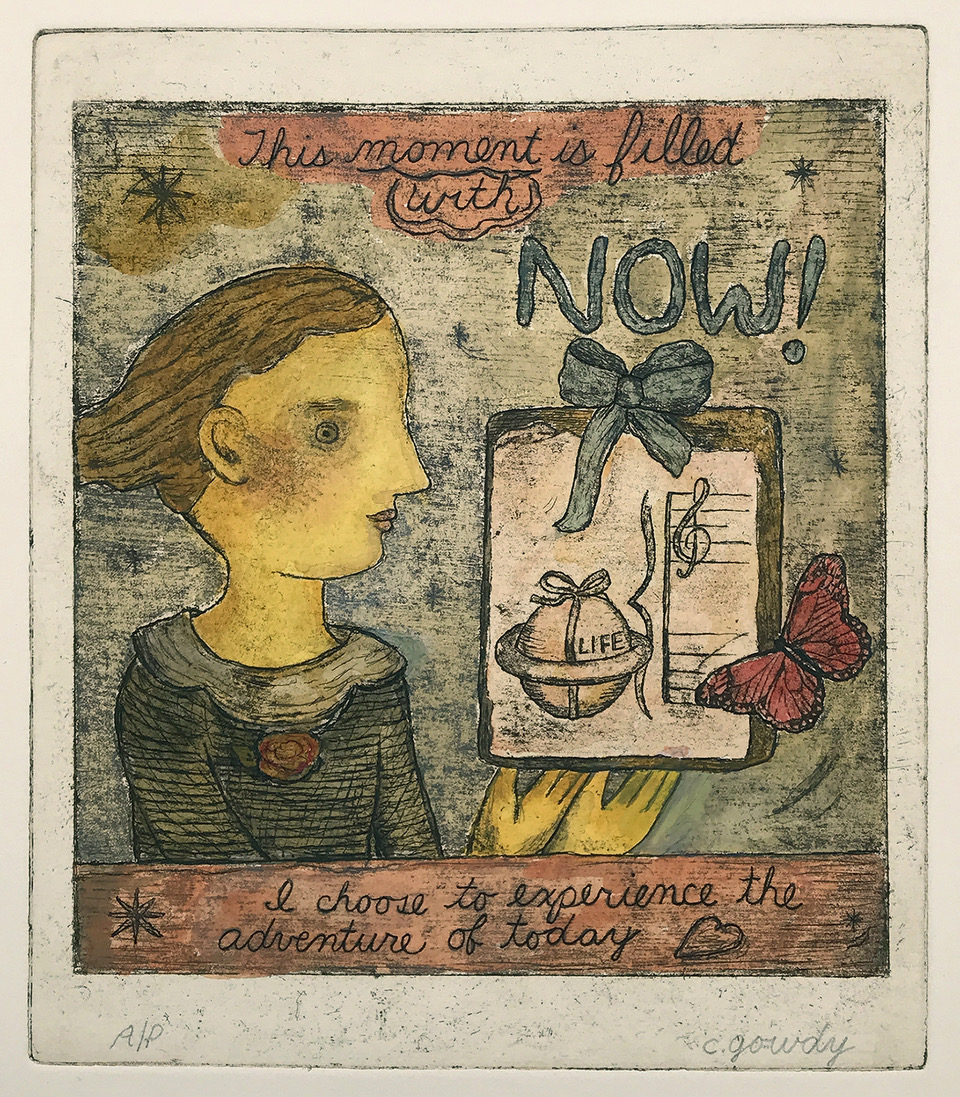
Carolyn was included in the AOI magazine’s Radical Illustrators issue in Autumn 1981. The magazine was produced by a loose-knit group of young artists and illustrators, who held a ‘shared-consciousness’ to fight against ‘superficial’ illustration.
I never felt part of a group. If anything, I felt a bit of an outsider as much as I respected the others. I was simply invited by one of the editors to provide a statement, along with two images of my work, to this special issue of the AOI Magazine. I don’t recall whether a title for the issue had been chosen at that point. I felt aligned, in that others were also demonstrating the courage to remain true to their independent voices and values, while posing important questions. There was a refreshing spirit of artistic and intellectual freedom. We did not know, at that time, how increasingly market led the world would alas become.
I felt fortunate to be included, along with others whose work I admired, and to be part of this progressive, stimulating, and influential moment.
Peter Till
AOI Patron Peter Till remembers what it used to be like delivering illustration commissions
Congratulations to AOI on reaching 50! What changes have taken place!
It used to be that every piece of artwork was an original. Every artwork had to be retrieved. Or fought over. (Though of course it was AOI that ensured original artwork remained the property of the artist).
I can’t walk through the West End without noticing the doorways of businesses that used to commission work from me.
I delivered my artwork by push bike. In the case of jobs with tight deadlines this shortened the time available for thinking and executing the art. In this respect the technology is beneficial but the age before the computer was perhaps more sociable and made for a better understanding between client and illustrator.
Anyway, here’s to the future!
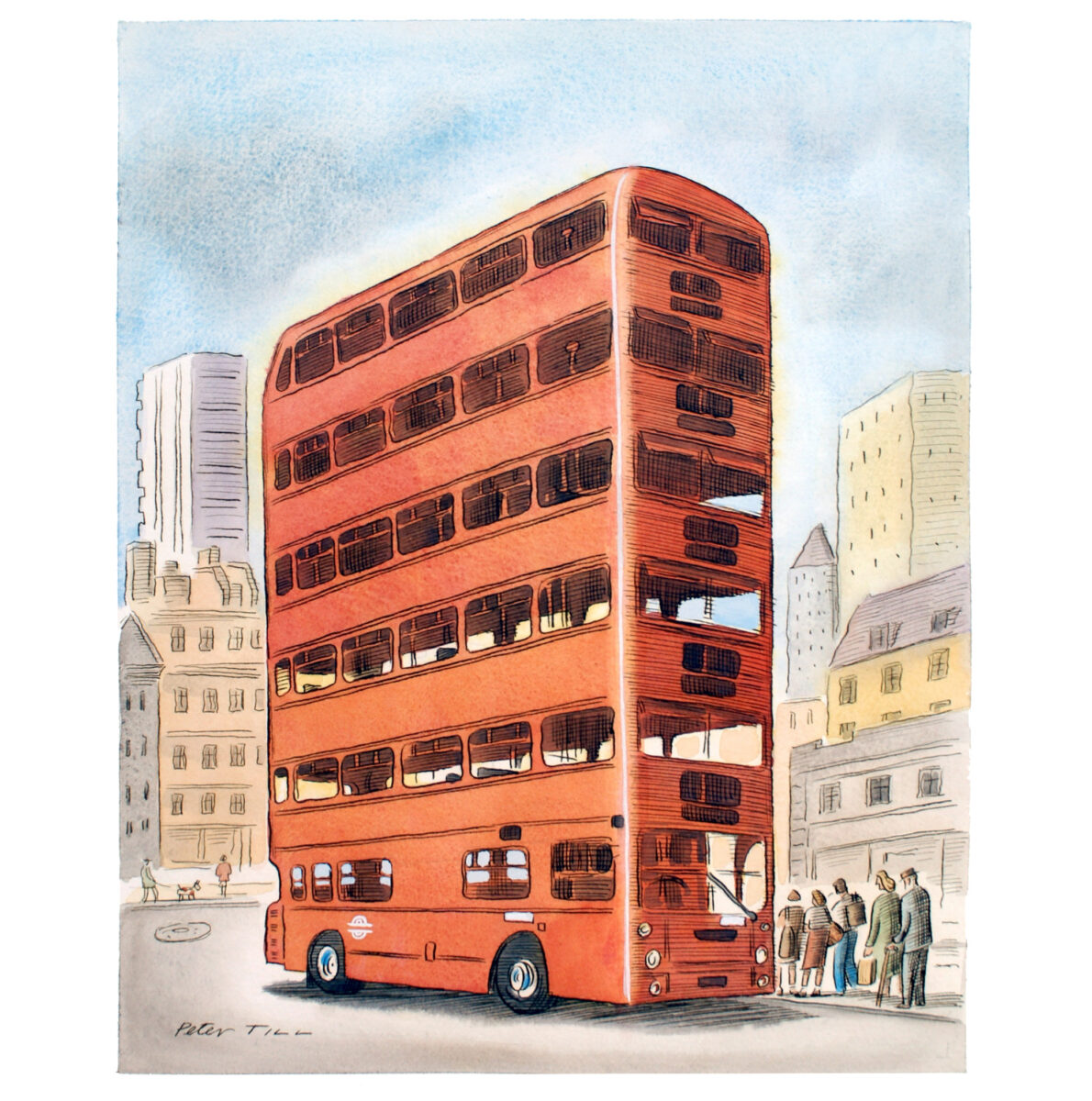
Anna Steinberg
Illustrator and tutor, Anna Steinberg worked on the AOI Membership desk from the 1990s, and trained other Membership advisors.
One of the first calls I answered at the AOI, probably in 1996, was ‘How does my daughter become an illustrator?’ I was a volunteer envelope-stuffer and I remember thinking ‘That’s what I want to know!’ My answer was a bit of a scramble and he said ‘I hope your second day goes better than your first day’. In time, I got established doing freelance illustration alongside part-time work on the membership desk, and my advice improved. It was nearly all phone calls, and old-school letters, then taking it in turns to be online with narrowband, dial-up internet.
The role had its stresses, as often we’d be supporting members through professional dilemmas, and it was busy, but I felt an affection for the membership and the staff and wider supporters involved. It was rewarding to be part of a problem-solving operation. I’d offer advice from a combination of my experience and AOI training, and would refer more complex issues to an elite and patient team of supporters.
It was very small and informally structured in those days (1997 – 2004). I think members might have imagined dozens of call handlers, but generally there would be three members of staff in the office, one on membership, one on events and a manager.
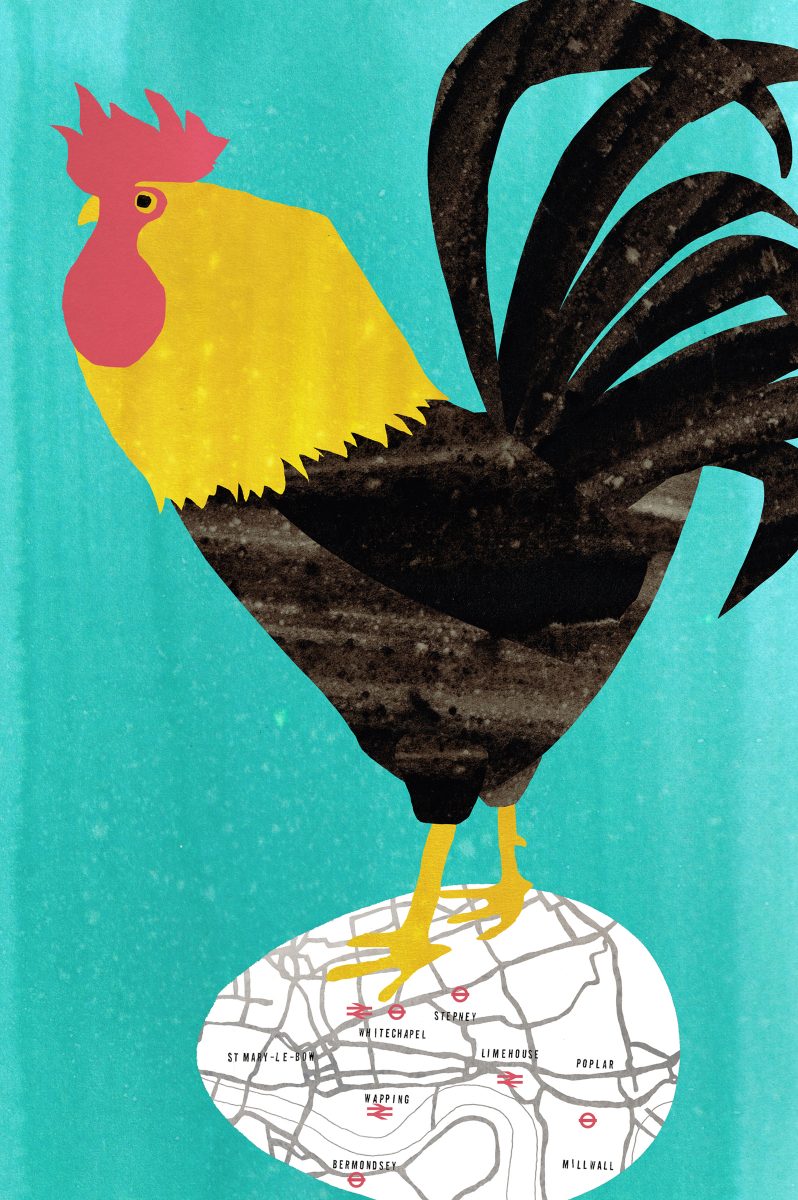
I feel proud to have had a role among the chain of custodians keeping it functioning from 1973 to 2023 – and beyond. The AOI lead me into an enthusiasm for spreading the word about copyright, negotiation and teaching in general. I now lecture in professional practice, alongside freelance work, so if I was to pick up the phone to that man again, I’d have something worthwhile to say.
I have a huge fondness for my years there and an appreciation for the AOI’s existence as a creative support network for the illustration industry. It’s a powerhouse pumping out opportunities and knowledge and it’s in place to challenge the copyright grabbers and the AI bots. Happy 50th AOI. You are a treasure.
Stuart Briers
Illustrator, Stuart Briers, was a long term AOI Board member and also acted as Chair. He was instrumental in leading on many technical aspects for the AOI.
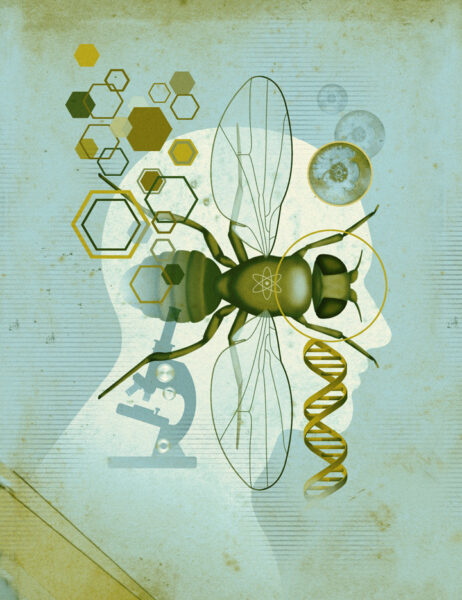
From 1995 through to 2013 I worked closely with AOI in various capacities, first as Chair, then board member and later as consultant/developer. It was a period of time that co-incided with the mid-period of my career as an illustrator and the burgeoning rise of new technology.
As an artist I was transitioning from a traditional working method with brushes and paints to a digital one, primarily using a Wacom pen and Adobe Photoshop. Adjacent to my illustration practice I was also learning website design/coding, html, css and database management. So when I was first elected as Chair of the AOI board it felt as though I could bring some of this practical experience to help develop the organisation which had recently fallen on hard times.
Indeed, when becoming involved, it came as something of a shock to discover that the organisation had no money, just two (part-time) members of staff and an aging Apple Mac computer. Membership numbers hovered around the 800-1200 mark with maybe just a third of those being full-time professional illustrators.
Despite the challenges we had an active and enthusiastic team of board members, all illustrators, who had strong ideas about how the organisation could improve and what they would like to see happen.
These were pretty early days in the ‘technical revolution’ – many people were still not even using email or had yet to get online so I like to think we were a little ahead of the curve in terms of development.
The following are a few snapshots/thoughts on projects I initiated which surprisingly feel almost quaint now compared to our world of AI and social media!
The AOI.com website
In 1998 we were approached by an outside developer to create AOI.co.uk. Initially everything sounded very exciting but unfortunately it soon became apparent that as the site was not managed by us problems began to surface, tech issues were frequently left unresolved and updates were painfully slow to materialise. To try and address matters publicly we put up a temporary news site, AOIsupplement, which then eventually morphed into the AOI.com in 2002 as we brought everything in-house. Starting out as a few simple pages html pages the site developed over the years to become a content-managed system featuring a discussion board, portfolios and members-only section.
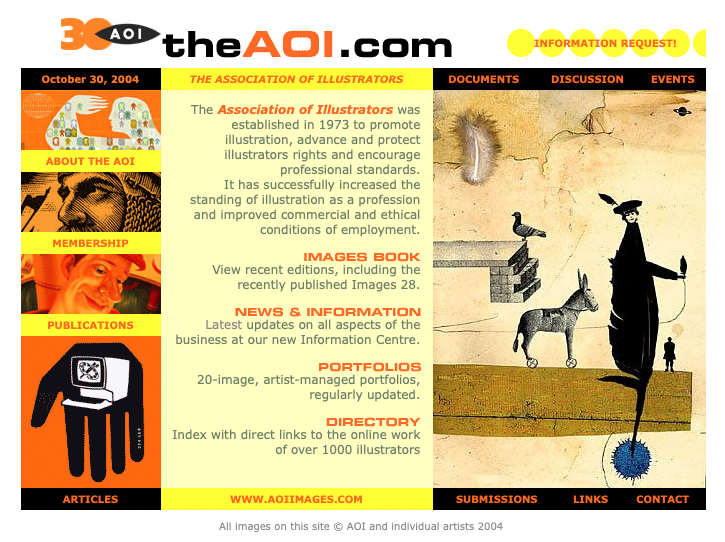
Discussion Board
Online forums were popular at the time and the software was free to install and configure. Could there be a better way for AOI to interact with its’ members? It was installed one weekend in 2002 and although it was intended to be a professional practice forum with most sections devoted to ‘business’ it is fair to say that the ‘Off Topic’ area saw most postings. In a way it presaged the advent of social media with members talking about all aspects of their lives away from the drawing table. By today’s standards it was very calm indeed although heated debates could still flare up – often around issues completely unrelated to illustration or tangentially at best. Controversies around the shooting of Charles de Menezes comes to mind as does the disappearance of Madeleine McCann and also the publishing of the Danish Mohammad cartoons. The latter topic being the sole occasion where a post had to be deleted, the poster seemingly oblivious to the violent events the cartoons had created.
There was plenty of criticism of the AOI too which was actually welcome as it afforded the opportunity to correct misunderstandings and offer explanations for perceived shortcomings in the organisation. The most divisive issue by far was the publication of Varoom magazine (2006). There were supporters and there were detractors and neither the twain shall meet.
Such was the strength of feeling a number of members decided to boycott the AOI and set up their own board elsewhere. Together with the arrival of Facebook, and later Twitter, the discussion board days proved to be numbered and closed its doors a year or so later.
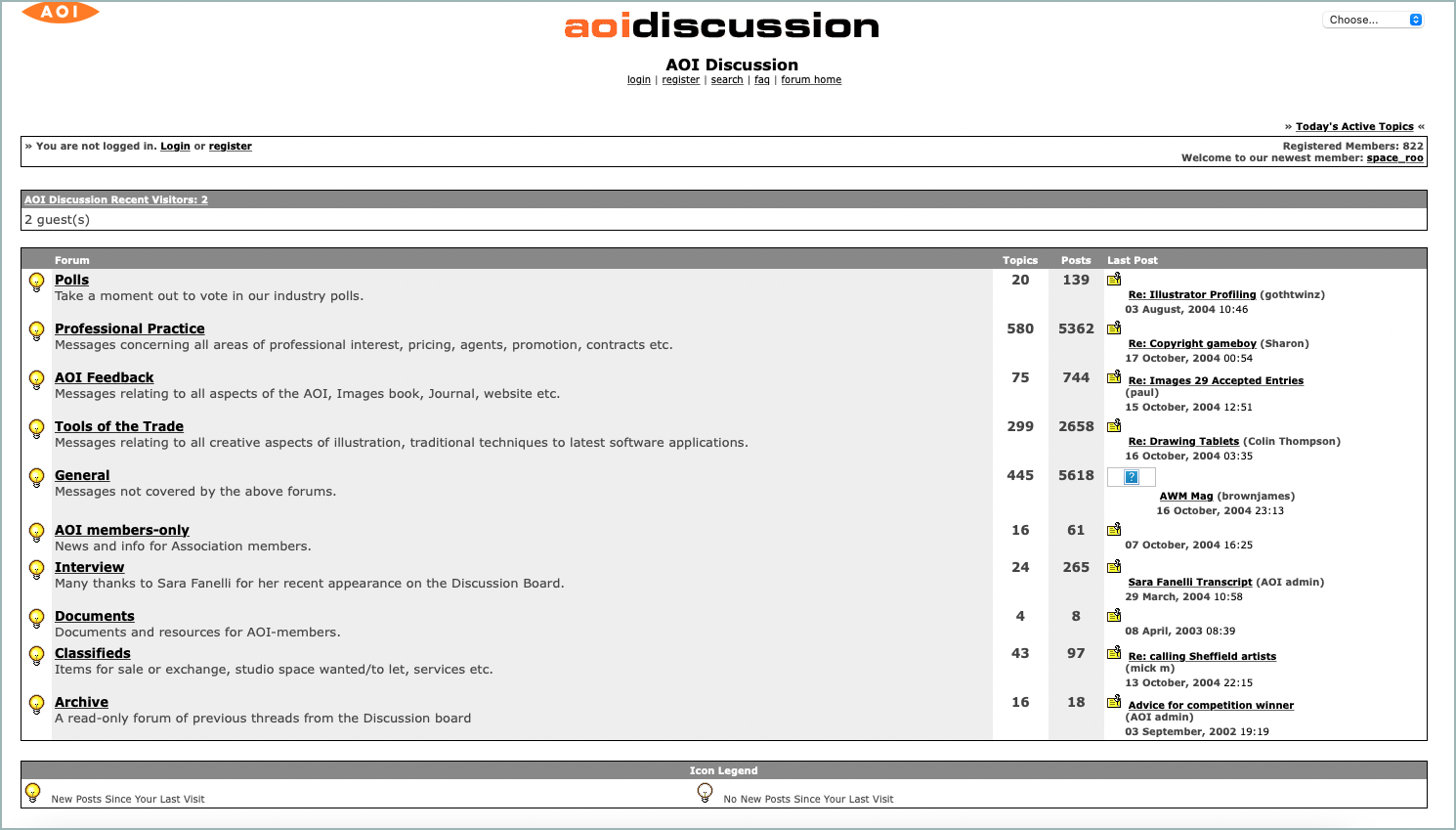
AOI Portfolios
In 2003 I came across a company in the U.S. called ImageFolio who had developed software enabling multiple artists to manage their own portfolios within a single managed system. It appeared to be tailor-made for AOI and proved to be the first step in displaying members work online.
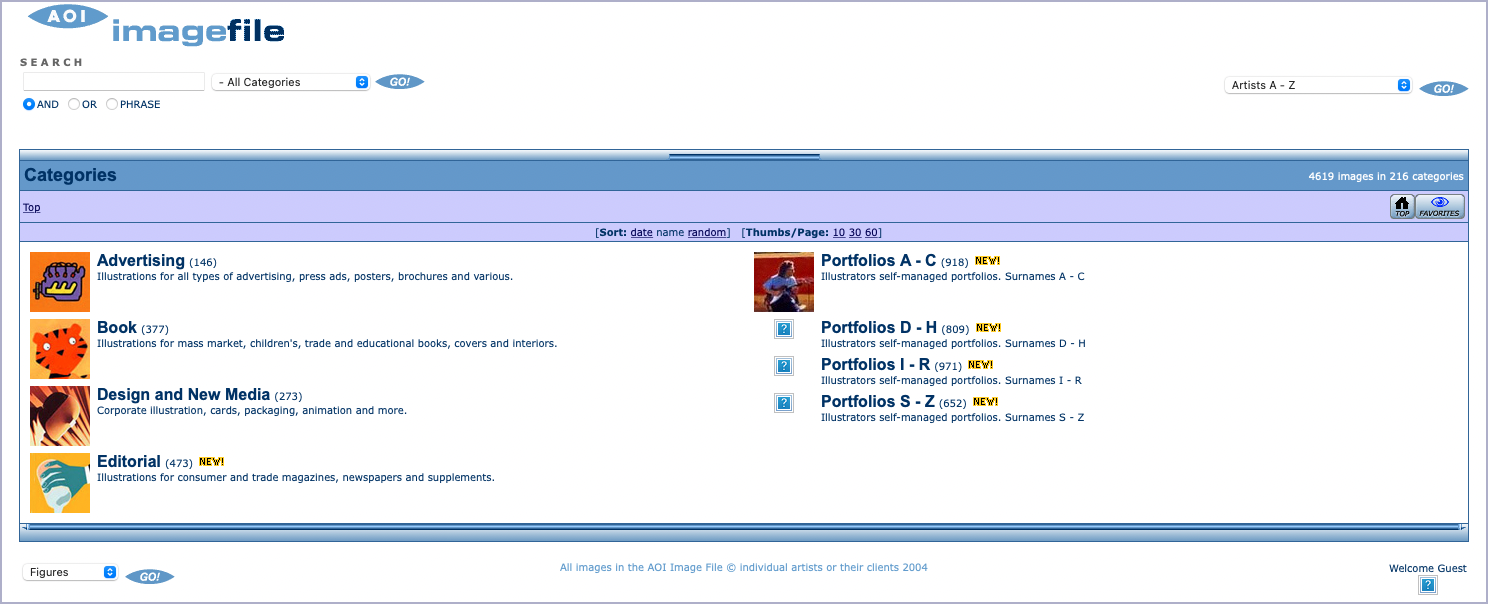
It is hard to overstate how much support I had throughout my time at the AOI, from fellow enthusiasts, board members and dedicated members of staff. Way too many to mention them all here but the following deserve special mention: James Marsh, Francis Blake, Derek Brazell, Silvia Baumgart, Harriet Booth, Michael Bramman and Rod Hunt.
Jo Davies
Jo Davies worked on many AOI publications, and was a Board member. She is Visiting Professor of Illustration at The University of Plymouth, a practicing illustrator and co-author of several books about illustration.
In the late 1990’s I jumped at the invitation from Simon Stern to train as an ethics advisor for the AOI. Being later elected to the Board of Directors literally meant sitting at the table with some of my illustration heroes, working with them to steer the big ship AOI (and at times keep it afloat).
As well as dealing with mind-bending pricing enquiries and contract advice I got to write articles for the newsletter and contribute to their publications. It’s hard to believe that in those pre internet days there was hardly any writing on the subject of illustration. As both a freelancer and academic I recognised the need for a more expansive publication dedicated to exploring topical ideas and issues, to appeal to both students and professionals.
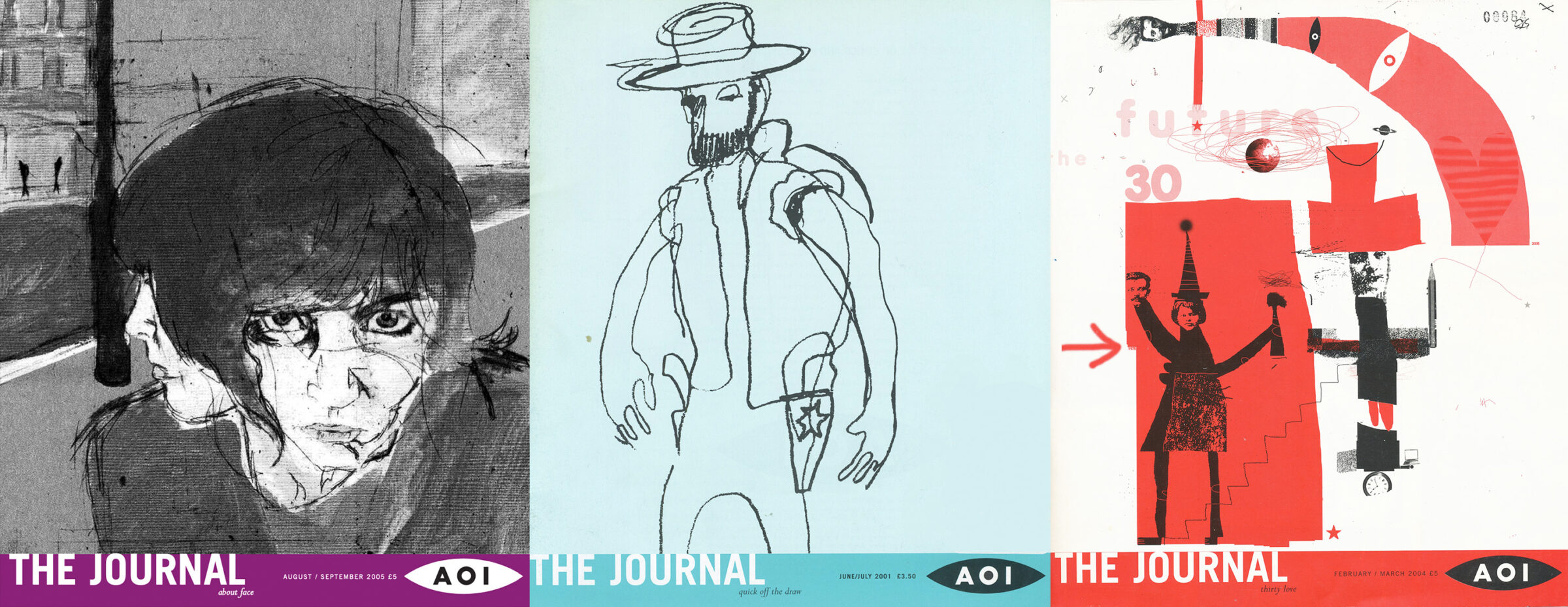
Backed by the Board the plan to create The Journal was hatched. I became expert in sweet talking illustrators, clients and fellow educators to contribute articles to launch what started as a bi-monthly magazine. As editor-in-chief life became a cycle of themed madness: not enough pages, not enough words, crazy deadlines, a tight budget, images out of focus. Sometimes tears. As soon as one issue was sent to print the next was on the drawing board. Its regular contributors, guest editors and designer were saintly. The readers were complimentary and most relished it landing on their door mats.
It seemed like the start of a new era for the subject. In the early 1980’s through their publications, portfolio reviews, events and exhibitions, the AOI contributed hugely to the professional education of students and professionals. The Journal in the late 1990’s, and later Varoom and VaroomLab Journal, played a renewed part in achieving this important goal, connecting practitioners: a platform for discourse that elevated the subject academically.
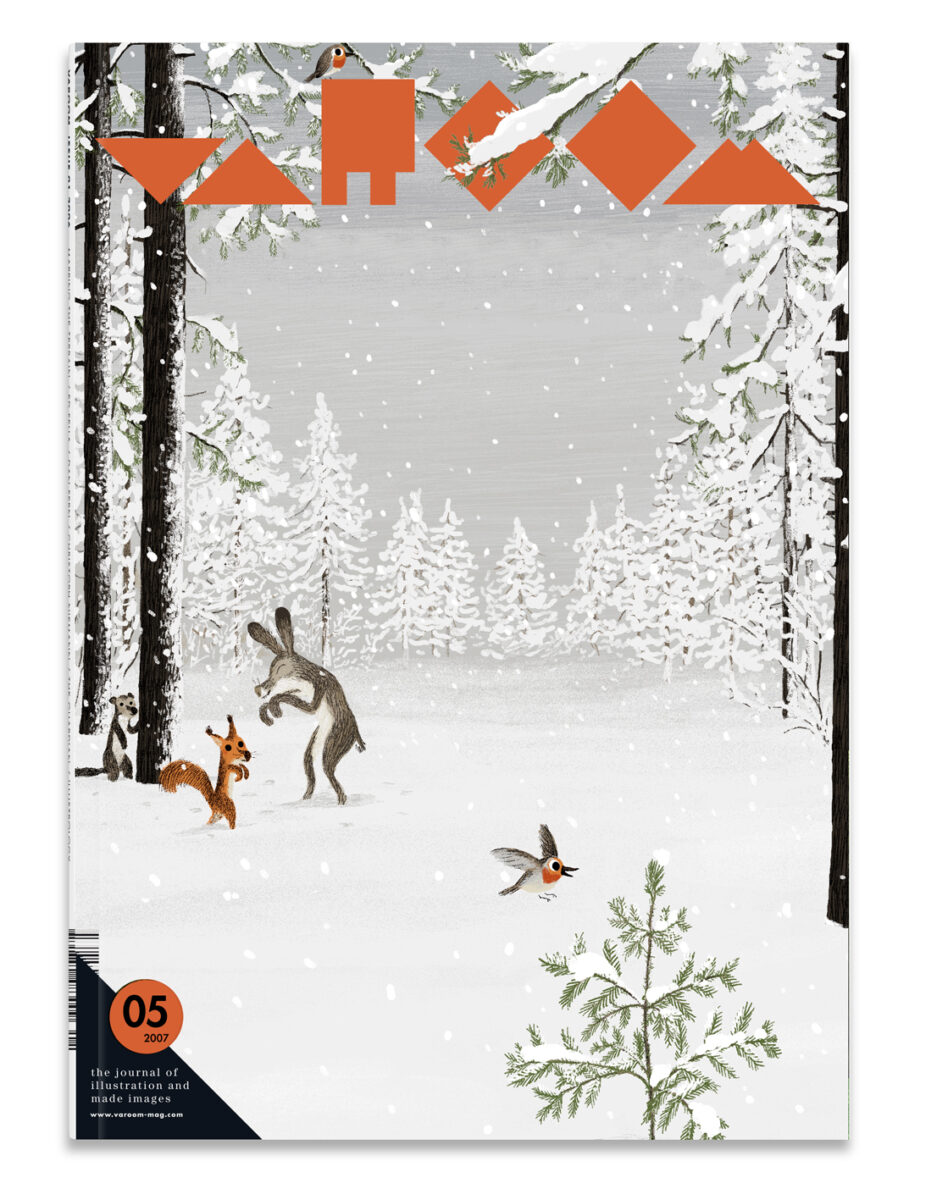
These publications provide an important archive of the dynamic world of illustration at that time and they’re still a good read.
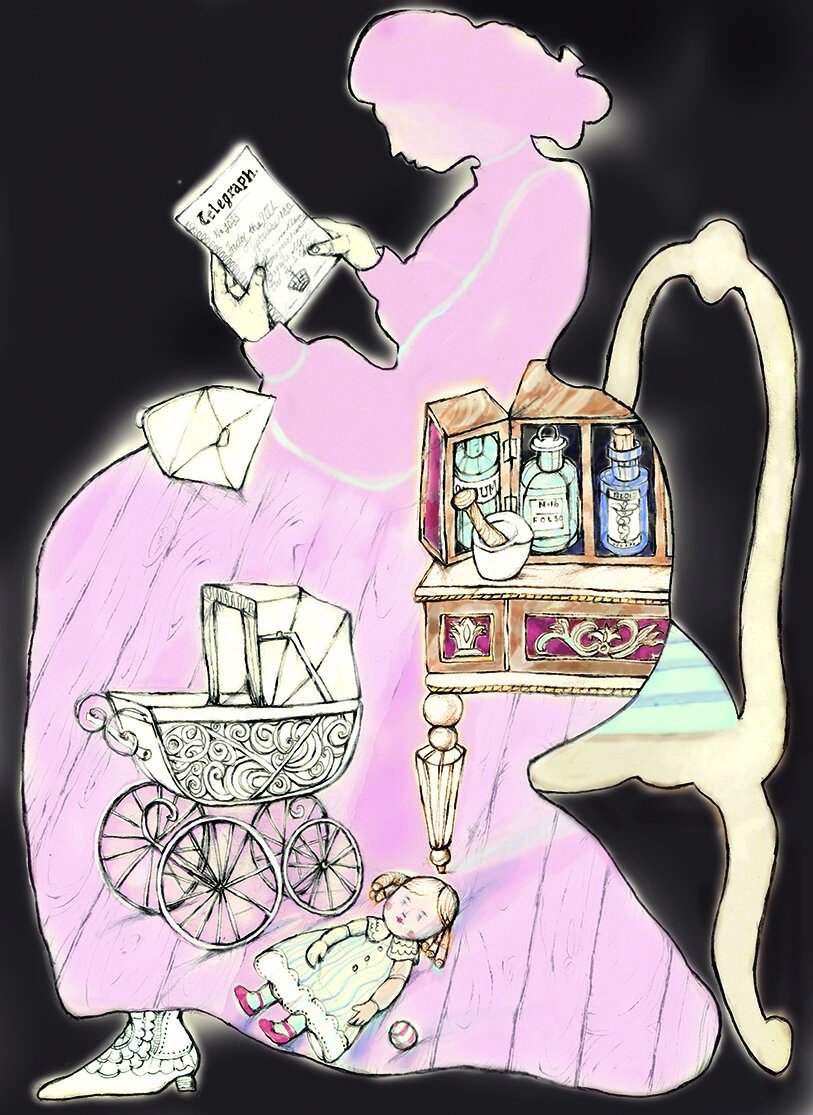
Robert Lands
Robert is the AOI’s trusted lawyer, Partner at Howard Kennedy and Head of the IP & Commercial team.
It has been my great privilege to work with the dedicated and highly professional team at the Association of Illustrators for the whole of my career to date – half of the AOI’s 50 years. The legal challenges faced by illustrators have certainly changed over the years. Publishers losing paper drawings is no longer the problem it once was! But no matter what the issue, the AOI has helped its members throughout that time to understand their legal rights and to improve their position immeasurably. Howard Kennedy is proud to continue to support those efforts.
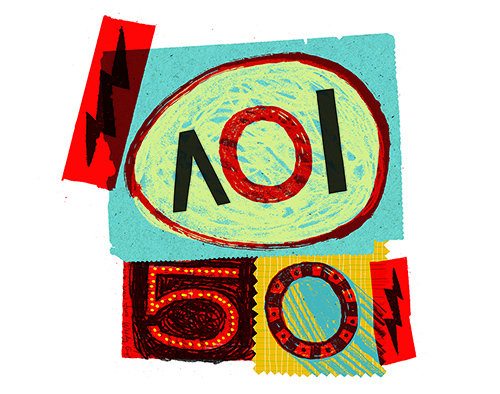
AOI 50th Anniversary illustration and logo by Jonny Hannah
More on our Anniversary:
AOI 50th Anniversary – Here for the members! Fifty years of support for illustrators
AOI 50th Anniversary – Got your back! Campaigning AOI’s achievements for all illustrators
AOI 50th Anniversary – Awards and Events From the first annual in 1976 to World Illustration Awards
AOI 50th anniversary – 5 major achievements
Back to News Page
